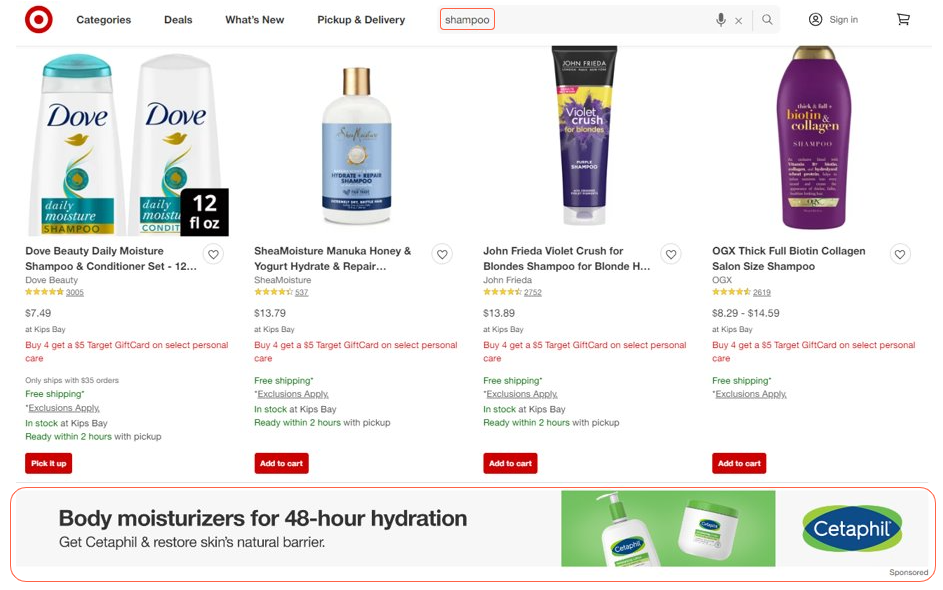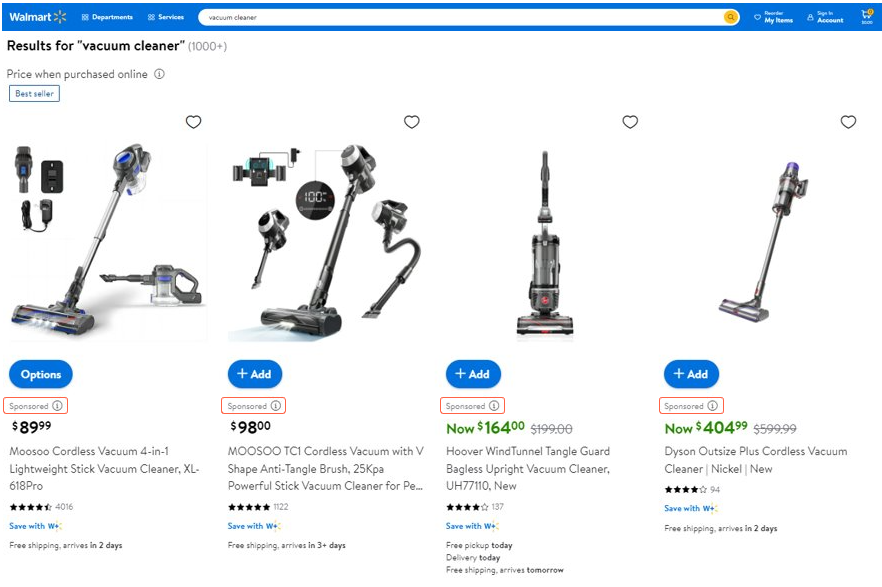
Let’s dispense with a common misconception about commerce media: your business has to be entrenched in the retail space or of a certain size to benefit. The truth is that commerce media works for nearly any online business that conducts transactions with its customers. Even the most niche business, with just a tiny fraction of the clicks seen by Amazon or Walmart, can easily leverage commerce media ad formats to improve the consumer experience, increase customer retention, and drive incremental dollars to their bottom line.
Overview: Commerce Media Ad Types
Launching a full-blown retail media network isn’t the only way for companies to take advantage of this growing advertising opportunity. The IAB outlines three primary ad types within the realm of retail/commerce media:
- On-site ads that appear on the retailer/media owner’s website (e.g., post-transaction ads, display banners, sponsored product ads, etc.)
- Off-site ads that leverage the retailer/media owner’s data to serve ads across external channels (e.g., web, app, audio, social, CTV, etc.)
- In-store digital ads that leverage the retailer/media owner’s data to deliver targeted ads within brick-and-mortar stores (e.g., product displays, signage, video screens, etc.)
For niche retailers and publishers looking to build a commerce media muscle, on-site ads offer a fast and easy way to monetize existing and often under-utilized digital real estate.
Turnkey Ad Formats for Commerce Partners
Explore the plug-and-play commerce media ad formats that any business can implement across their owned channels with minimal effort and resources.
Post-Transaction Ads
The connection to the shopper doesn’t end when they make a purchase. As a simple add-on to ecommerce confirmation pages, post-transaction ads offer businesses a low-lift opportunity to experiment with a commerce media strategy and generate new revenue streams.
Post-transaction ads allow advertisers to promote additional products or services to the shopper while they’re in the buying mindset. After a consumer makes a purchase, they receive targeted offers based on signals like demographics, shopping habits, and buying history, helping to elevate the customer experience.
As a means to surprise and delight customers, post-transaction ads often include incentives like a discount, lower-cost or free shipping, or a free trial offer. Showing consumers that you can anticipate their needs – e.g., serving a travel offer to a customer who has purchased tickets to a concert or event away from their home – goes a long way toward building loyalty and driving retention.
Learn how Vivid Seats is unlocking the value of post-transaction advertising with adflow >

Display Banners
Display banners live where shoppers are already browsing, listening, and engaging with content on retailer and commerce partners’ websites. They can be static images, animated GIFs, or videos and typically include a CTA inviting consumers to take action.
Despite all the talk of “banner blindness,” the most eye-catching display ads can help influence purchase decisions when served in the right context. For example, not only can retailers display personalized offers and recommendations to website visitors based on their browsing and shopping history, but they can also serve ads for products that are contextually relevant based on the shoppers’ search terms.
In the example below, an ad for moisturizer appears alongside search results for “shampoo.” By serving ads that fit within the same category the shopper is already searching for – in this case, “personal care” – Target.com is creating a more seamless and personalized consumer journey while delivering added brand exposure for advertisers.

Sponsored Product Ads
Similar to the previous formats we’ve covered, sponsored product ads are contextually relevant, making them less disruptive to the overall consumer experience. These ads typically appear within search results and work best for retailers with ecommerce inventory.
Sponsored ads are meant to adopt the feel and function of the website or app in which they are served. For example, when a consumer searches for vacuums on Walmart.com, the first four results that populate are sponsored product ads from brands like Hoover and Dyson. These ads fit seamlessly among all the following search results, almost identical in appearance, barring the “Sponsored” disclaimer text highlighted in the example below.
With their placement at the top of search results and likeness to organic listings, sponsored ads help advertisers increase visibility, establish credibility, and drive sales. It’s a win-win for all parties – advertisers bid on keywords to achieve maximum exposure, and retailers boost revenue through a pay-per-click pricing model.

Next Steps
While launching a commerce media offering may seem daunting, each ad format listed above offers a quick and easy way to generate incremental revenue. As you prepare to tap into this massive opportunity, be sure to keep the following best practices in mind:
- Create seamless ad experiences that feel native to your brand.
- Leverage first-party data to enhance the customer journey.
- Offer advertisers clear insight into key performance metrics.
Ready to get started? Learn how to unlock new revenue opportunities with adflow here.